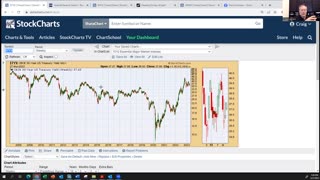AGENDA 21 RADIO MARCH 13, 2023
Silicon Valley Bank failure
Silicon Valley Bank (SIVB) has been shut down by regulators who cited both inadequate liquidity and insolvency.
According to the FDIC, insured SIVB depositors will have access to their funds no later than Monday morning.
SIVB’s $209 bn in assets are roughly 2/3 of Washington Mutual (not adjusted for inflation), which failed in 2008.
The mid-day closure of the bank was unusual, and is something we are still evaluating.
The liabiity issue: extreme reliance on institutional/VC funding rather than traditional retail deposits
While capital, wholesale funding and loan to deposit ratios improved for many US banks since 2008, there are
exceptions. As shown in the first chart, SIVB was in a league of its own: a high level of loans plus securities as
a percentage of deposits, and very low reliance on stickier retail deposits as a share of total deposits. Bottom
line: SIVB carved out a distinct and riskier niche than other banks, setting itself up for large potential capital
shortfalls in case of rising interest rates, deposit outflows and forced asset sales. [Note: This chart appeared in
our 2023 Outlook in a discussion on risks related to deposits, rising rates and quantitative tightening].
A further look at SIVB funding (pie charts)shows unusually high reliance on corporate/VC funding; only the small
red private bank slice looks like traditional retail deposits to us. Out of SIVB’s $173 billion of customer deposits
at the end of 2022, $152 billion were reportedly uninsured (i.e., over the $250,000 FDIC insurance threshold)
and only $4.8 billion were fully insured. It’s fair to ask about the underwriting discipline of VC firms that put
most of their liquidity in a single bank with this kind of risk profile1
. At the end of 2022, SIVB only offered 0.60%
more on deposits than its peers as compensation for the risks illustrated below; in 2021 this premium was 0.04%.
-
 2:58:42
2:58:42
American Exceptionalism News Network
1 year agoAGENDA 21 RADIO MARCH 15, 2023
2.53K2 -
 4:01:17
4:01:17
American Exceptionalism News Network
1 year agoAGENDA 21 RADIO MARCH 14, 2023
1.26K6 -
 2:58:36
2:58:36
BrooksAgnew
1 year agoThe Green Horseman: America Free Radio with Brooks Agnew
2.11K6 -
 16:22
16:22
LarsonAdvisors
1 year ago $0.12 earnedLarsonAdvisors #17 March 27th, 2023 Market Minute
74 -
 3:27
3:27
UGGTV
1 year agoUGG TV Daily News March 20 2023
233 -
 48:28
48:28
afaTHECORE
1 year ago@ THE CORE March 13, 2023
-
 48:29
48:29
afaTHECORE
1 year ago@ THE CORE March 14, 2023
1 -
 19:52
19:52
The AdHero Podcast
1 year agoThe AdHero Podcast EP. 60: Financial Meltdown And What To Do
11 -
 29:24
29:24
UGGTV
1 year agoUGG TV Daily News March 17 2023
220 -
 42:08
42:08
rethinkingthedollar
1 year agoFrom Banking Crisis To Currency Crisis...There's No Turning Back! | RTD Live Talk
71